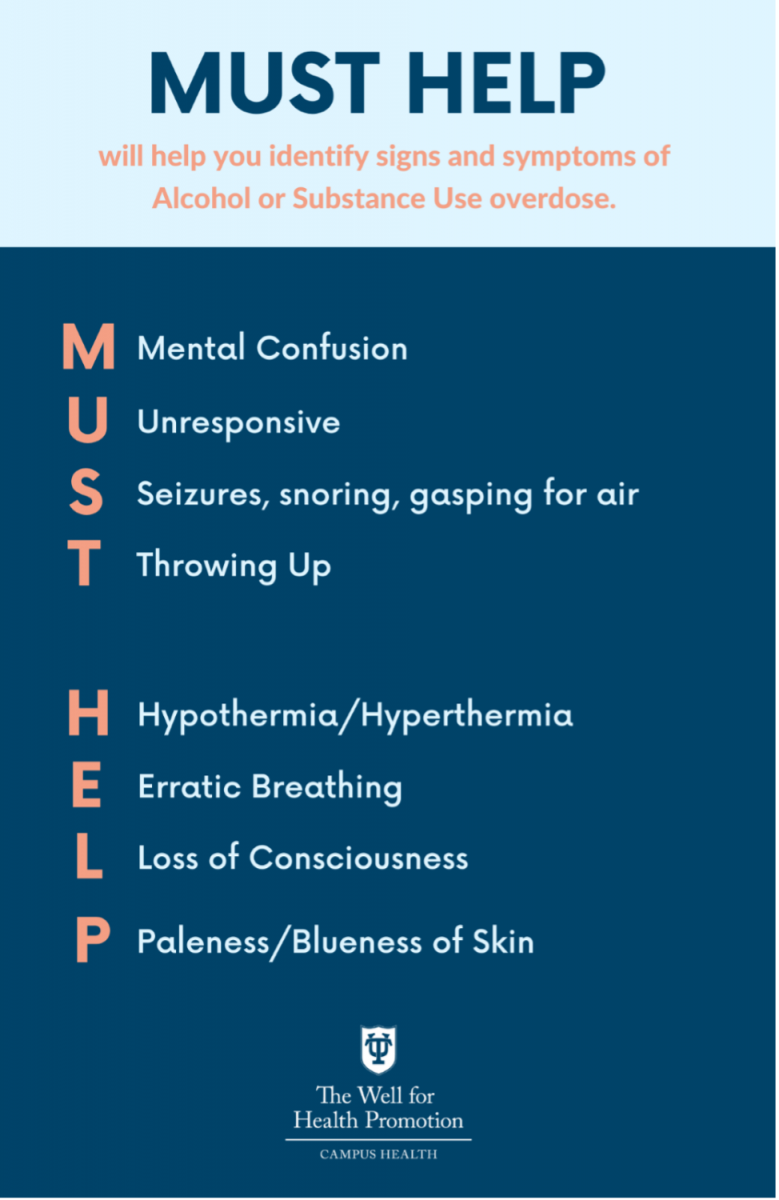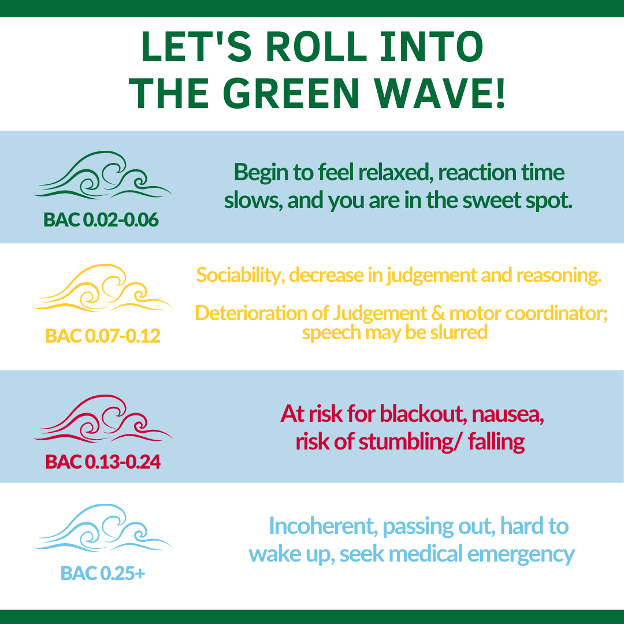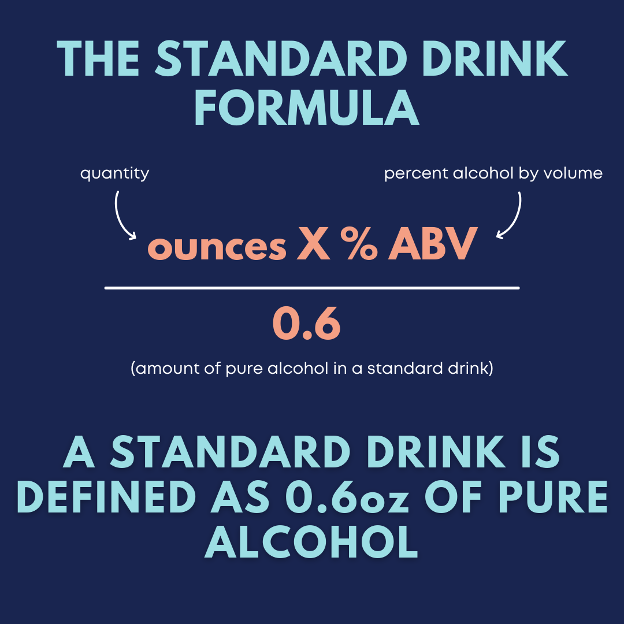The Well for Health Promotion provides resources and intervention services that are available for students who may find themselves in situations where you will be making decisions about drinking alcohol at parties, on dates, at a friends house, at a bar, in your room, etc. It is best to make careful, thoughtful decisions about alcohol, before you decide to drink for the first time, or before you drink at a party or an event.
Most Tulane students make smart decisions about their health when it comes to drug and substance use. Approximately 15% students on our campus choose not to drink during their time at Tulane and those who choose drink, consume responsibly and in moderation.
Tulane's Alcohol & Other Drugs Policy
Tulane's Tobacco & Smoke-Free Campus Policy
Alcohol Overdose
Alcohol overdose can be fatal. If someone has had too much to drink or hurt themselves while drinking, call for help immediately and stay with the person until help arrives. In cases of a potential head injury, even if the person regains consciousness, they must be evaluated immediately.
Research shows that teens and college-age young adults often engage in binge drinking and high-intensity drinking. Drinking such large quantities of alcohol can overwhelm the body’s ability to break down and clear alcohol from the bloodstream. This leads to rapid increases in blood alcohol concentration (BAC) and significantly impairs brain and other bodily functions. BAC can continue to rise even when a person stops drinking or is unconscious. Alcohol in the stomach and intestine continues to enter the bloodstream and circulate throughout the body.
Drinking large quantities of alcohol can overwhelm the body’s ability to break down and clear alcohol from the bloodstream. This leads to rapid increases in blood alcohol concentration (BAC) and significantly impairs brain and other bodily functions. BAC can continue to rise even when a person stops drinking or is unconscious.
MUST HELP will help you identify the signs and symptoms of Alcohol or Substance Use overdose and remember to always call Tulane EMS for help if someone is experiencing these signs when on campus at 504- 862-8121 or 911 when off campus.

M - Mental confusion
U - Unresponsive
S - Seizures, snoring, gasping for air
T - Throwing up
H - Hypothermia/hyperthermia
E - Erratic breathing
L - Loss of consciousness
P - Paleness/blueness of skin
Blood Alcohol Concentration
Tulanians who choose to drink alcohol should be smart about it. Drinking to a BAC above 0.05 will increase the chance of rolling into the yellow, red, or blue waves.
Use this calculator to help you find roll the wave of green; it's science.

BAC 0.02 - 0.06 - Begin to feel relaxed; reaction time slows, and you are in the sweet spot.
BAC 0.07 - 0.12 - Decrease in judgement and reasoning. Deterioration of judgement and motor coordination. Speech may be slurred.
BAC 0.12 - 0.24 - At risk for blackout, nausea, stumbling and falling.
BAC 0.25+ - Incoherent, passing out, hard to wake up. Seek medical emergency services.
Eight healthy drinking habits.
8 ways for Healthy Drinking Habits
1. CHOOSE, when and what to consume
- Choose your values, by only drinking what and the amount that is right for you.
- Choose not to drink on some occasions when others do.
- Choose to drink when it is legal for you.
- You could always choose not to drink
2. EAT, food before and while consuming
- Drinking on an empty stomach will cause your blood alcohol level (BAC) to spike quickly, therefore increasing the risk of blackout, vomiting, and passing out.
- Eat a large meal right before drinking.
- Snack throughout the evening.
3. PACE and SPACE, your drinking consumption
- Pacing reduces negative social outcomes and helps you maintain your judgement and inhibitions through out the evening.
- Limit or eliminate activities that result in drinking quickly.
- Keep it social by pacing standard drinks to one per hour.
- Know your blood alcohol level (BAC) and keep your BAC < .06
4. HYDRATE, staying hydrated before, during, and after consuming alcohol
- Drinking causes dehydration, reducing energy levels and making you feel tired, as well as increasing the severity of your hangover.
- Drink at least 24 oz. of water before you start drinking.
- Drink 6 to 12 oz. of water or another non-alcoholic beverage after each alcoholic beverage.
5. TRACK, number of standard drinks
- To track your consumption, you need to know exactly how much you drink by calculating standard drinks. A standard drink = % (Alcohol x Size (.oz)) /.6
- Set a drink limit that reduces or eliminates negative outcomes.

6. MODERATE, number drinks consumed in a certain amount of time.
- Moderation is the key to optimizing positive social outcomes. For example, keeping your blood alcohol content at, or below, .06 will ensure you have positive and productive social interactions. Once you feel relaxed and are having fun, you can then pace to maintain your cognitive and physical abilities.
- Research indicates the probability of negative outcomes increase quickly as BAC rises above .06 and then increase exponentially at blood alcohol levels rise above .10. The only way to estimate your blood alcohol concentration is to track and calculate standard drinks.
7. DESIGNATE, a non-drinking driver
- A non-drinking driver is the only safe ride. Impairment starts with the first drink.
- Have a plan for getting home safely
- If you are driving, do not drink
- If you drink, do not drive
- Never ride with someone who has been drinking
8. REMEMBER, you can always choose not to drink
